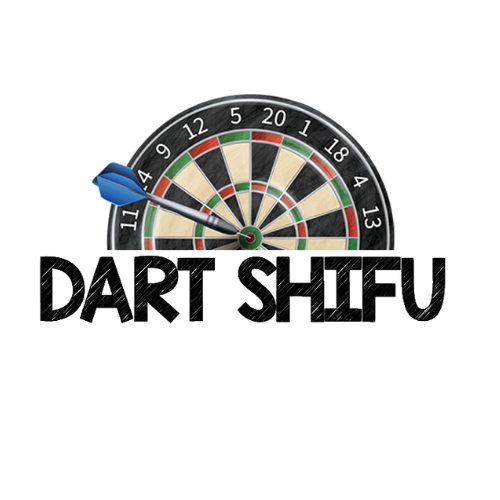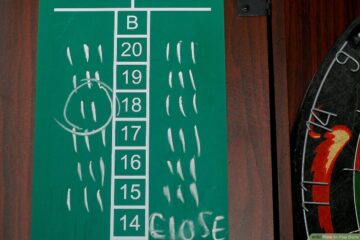Do you want to improve your darts game? Practice consistently with a purpose! Start with proper stance, grip, and throwing technique. Focus on accuracy by aiming for specific targets on the board. Develop a strategy to use your strengths to outsmart your opponent.
By honing your skills and focusing on the fundamentals, you can improve your aim, control, and overall performance in the game.
From perfecting your grip to mastering the right throwing technique and developing a mental game plan, we’ve got you covered. Get ready to hit those bullseyes and take your game to the next level with our guide to getting better at darts.
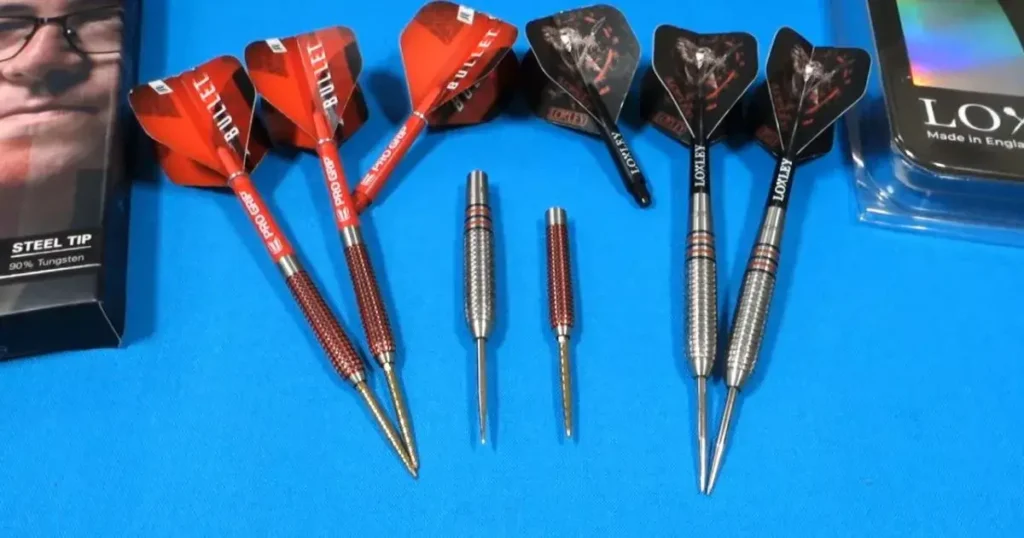
Gear Up for Success: Essential Darts Equipment
Picking the Perfect Darts
Choosing the right darts for your playing style is the first step to improving your dart game. The right dart can make all the difference in your accuracy and success on the board. When selecting your dart, consider the weight, length, and shape of the dart.
The weight of the dart should feel comfortable in your hand and be suited to your throwing style. Heavier darts are better for those with a stronger throwing arm, while lighter darts are better for those with a more delicate touch.
The length and shape of the dart can also affect your accuracy, as they can impact your grip and release. Experiment with different styles to find the one that suits you best.
Find Your Ideal Dartboard!
Selecting the appropriate dartboard for your skill level and playing area is also important. There are different types of dartboards, including traditional bristle boards and electronic boards.
Bristle boards are better for more experienced players, as they provide a more authentic playing experience and require better accuracy to score points. Electronic boards are better for beginners or those playing in areas with limited space, as they are easier to set up and score.
Additionally, consider the size of the board and the distance from which you will be throwing. A regulation dartboard should be 18 inches in diameter and mounted 5 feet 8 inches from the floor to the center of the bullseye.
Illuminate Your Space!
The importance of having good lighting cannot be overstated. Poor lighting can make it difficult to see the board and affect your accuracy. Make sure your playing area is well-lit, preferably with natural light or bright overhead lighting.
Avoid playing in dimly lit areas or under harsh fluorescent lighting, as this can cause eye strain and make it harder to focus on the board.
Good lighting will also reduce the likelihood of shadows on the board, which can be distracting and affect your aim. So, ensure that you have good lighting to make the most of your dart game.
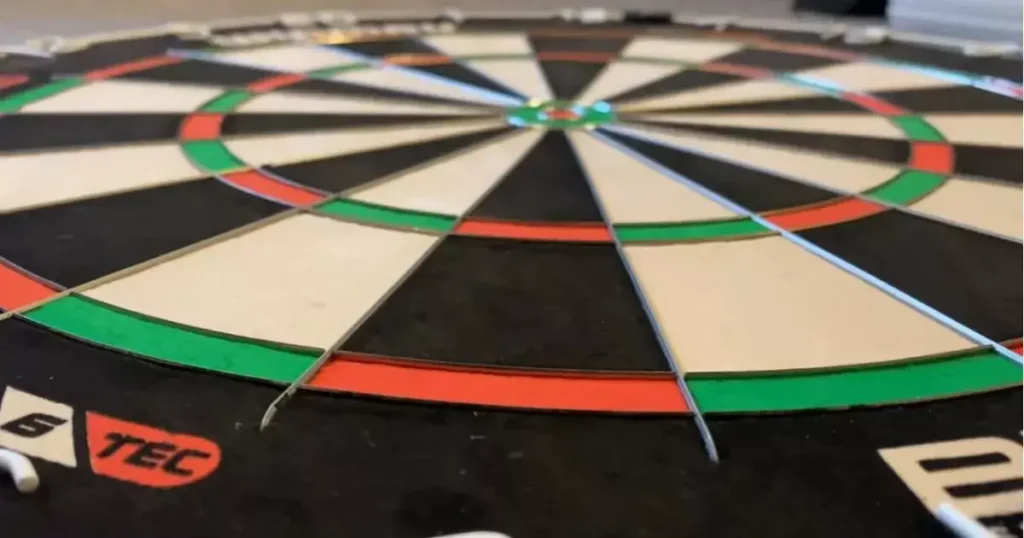
Enhance Technique!
Get Your Grip: Boost Accuracy Now!
Improving your technique is essential for better accuracy in darts. A proper grip and stance for better accuracy are crucial for consistent throws. To achieve a proper grip, hold the dart between your thumb and index finger with the other fingers supporting the dart.
The grip should be firm, but not too tight, and comfortable for you. Your stance should also be comfortable and stable, with your feet shoulder-width apart and your weight evenly distributed.
Follow Through: Achieve Darting Success!
The importance of following through cannot be overstated when playing darts. Following through involves extending your arm towards the board and releasing the dart with a smooth motion. This technique ensures that the dart travels along a straight line toward the target. It also prevents any unnecessary movements that can affect your accuracy.
Perfect Release: Ace Your Game!
Mastering the release is also crucial for better accuracy in darts. The release should be smooth and consistent, with the fingers releasing the dart at the same time.
Your grip should remain firm until the moment of release, then release the dart with a flick of the wrist. Be mindful of your follow-through and ensure that your arm extends towards the board after releasing the dart.
Practice drills to improve your aim
Practice drills to improve your aim are an excellent way to improve your dart game. Some common drills include aiming at specific parts of the board, throwing with your non-dominant hand, and throwing with your eyes closed. These drills can help you identify weaknesses in your game and develop new techniques for better accuracy.
It’s also essential to practice regularly and focus on your form, rather than just throwing randomly at the board. With consistent practice and dedication, you can improve your technique and take your dart game to the next level.
Mental Preparation
Mental preparation is crucial for success in darts. Concentration, focus, visualization techniques, relaxation, and breathing exercises can all help improve your mental game and increase your chances of success.
The Power of Concentration
Mental preparation is just as important as physical preparation when it comes to darts. The role of concentration and focus in darts cannot be overstated. To play at your best, you need to focus entirely on the task at hand and avoid distractions. Before each throw, take a moment to clear your mind and focus on the target.
Visualization Techniques
Relaxation and breathing exercises are also essential for mental preparation in darts. Stress and anxiety can negatively affect your performance, so it’s important to stay calm and focused.
You can also try progressive muscle relaxation, which involves tensing and relaxing different muscle groups in your body to reduce tension and anxiety. This technique can help you feel more relaxed and focused during your game.
Breathe Your Stress Away
Picture yourself making a successful throw, hitting the bullseye, or achieving your target score. Take a few deep breaths before each throw to clear your mind and calm your nerves.
Visualizing your success can help you stay motivated and focused during your game. Try to incorporate visualization into your pre-game routine or practice sessions to develop this mental skill.
Keep Going: Practice Makes Perfect
Encouragement to keep practicing is essential for anyone looking to improve their dart game. Practice makes perfect, and the more you practice, the better you will become. Don’t be discouraged if you don’t see immediate results – improving your dart game takes time and effort. Keep at it, and you will see progress.
Remember that playing darts is meant to be fun, so enjoy the process of improvement. Celebrate your successes, no matter how small, and learn from your mistakes.
It’s also important to challenge yourself and set goals for improvement. Whether it’s hitting a certain score or winning a game against a tough opponent, setting goals can help you stay motivated and focused.
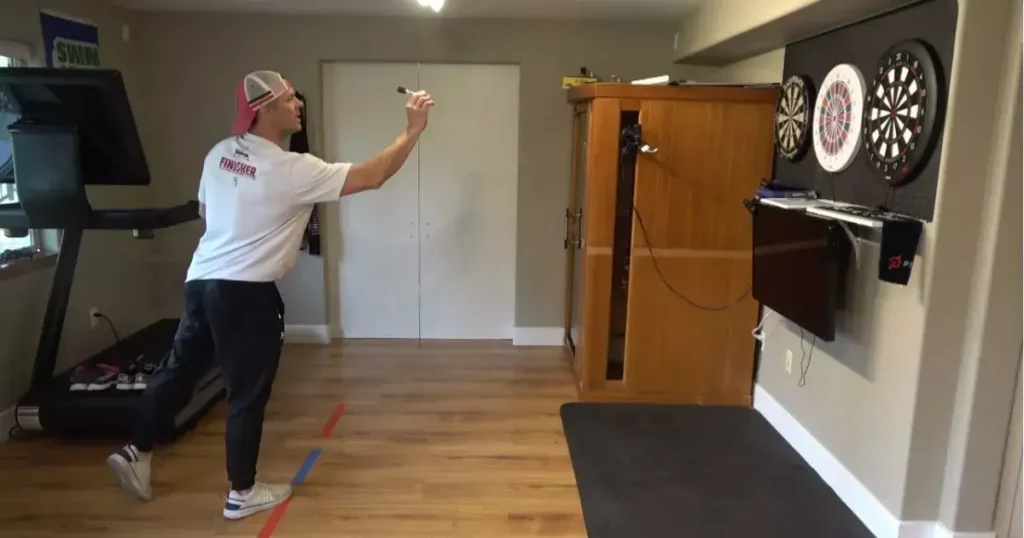
FAQ
Q: How long will it take to get better at darts?
Improving your dart game takes time and effort, and the amount of time it takes to see improvement will vary depending on the individual. However, with consistent practice and dedication, you can start to see progress in a matter of weeks or months.
Q: What kind of darts should I use to improve my game?
The right darts for you will depend on your playing style and preferences. Consider the weight, length, and shape of the dart, and try out different options until you find the ones that feel comfortable and effective for you.
Q: Do I need a special dartboard to improve my game?
While there are different types of dartboards available, you don’t necessarily need a special board to improve your game. However, choosing a quality board and maintaining it properly can help ensure consistent play and accuracy.
Q: How important is mental preparation in darts?
Mental preparation is essential for success in darts. Developing concentration, visualization, and relaxation techniques can help you stay focused and calm under pressure, leading to better performance on the dartboard.
Q: Can playing different game variations improve my dart skills?
Yes, practicing different game variations can help you broaden your skills and develop new strategies. Each game variation requires different skills and techniques, so trying out different games can help you identify your strengths and weaknesses and improve your overall game.
Q: Should I focus on my weaknesses or my strengths when practicing?
While it’s important to address weaknesses in your game, focusing on your strengths can also be beneficial. By playing to your strengths, you can capitalize on your natural abilities and gain confidence, which can improve your overall performance.
Q: How do I stay motivated to keep practicing?
Setting goals, tracking progress, and challenging yourself can help you stay motivated to keep practicing. Additionally, finding a practice partner or joining a league can provide a social and competitive element to your practice routine, making it more enjoyable and engaging.
Wrapping up
Becoming a better dart player requires a combination of physical and mental preparation, playing strategies, and dedication. Choosing the right equipment, improving your technique, and developing mental skills like concentration and visualization is crucial for success.
Additionally, playing to your strengths, developing a game plan, and practicing different game variations can all help you become a better player.
Don’t forget to keep practicing, stay positive, and enjoy the process. With hard work and dedication, you can take your dart game to the next level and become a true master of the sport. ! Happy Throwing!
